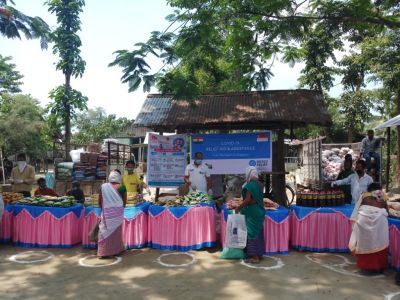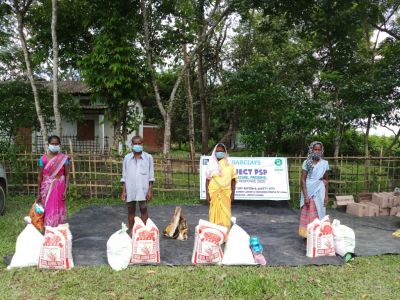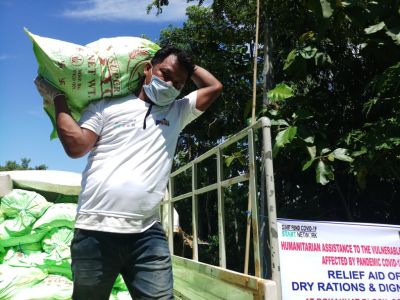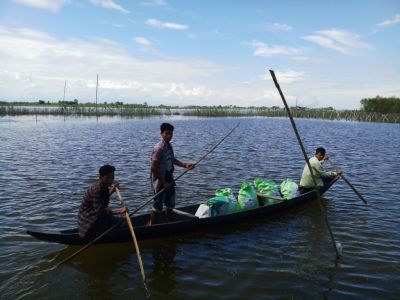This article is part of Reality of Aid – Asia Pacific’s COVID-19 Response Series, “Resisting Repression; Recovering Together”, which aims to document the struggles, best practices, and lessons learned, as well as share recommendations of RoA-AP members as they responded to the pandemic at the national or regional level. Read more stories here.
By Tirtha Prasad Saikia, North East Affected Area Development Society (NEADS)
COVID-19 pandemic in Assam
The first case of the COVID-19 pandemic in the Indian state of Assam was reported on 31st March 2020. As of 6th August 2020, the Government of Assam has confirmed a total of 50,445 positive cases of COVID-19 including 35,892 recoveries and 121 deaths in the state.
COVID-19 is spreading across the state Assam at alarming speed. This is an unprecedented crisis and calls for unprecedented measures. The impact of this global outbreak is being felt everywhere across all our operation areas in the state which is hitting the poor and marginalized the hardest.
With multiple phases of lockdowns many secondary disasters have emerged such as fragile public health, food insecurity, malnutrition, psychological stress, domestic violence, conflict and impact on people’s livelihood for people who are already economically more vulnerable and marginalized.
Assam has also begun witnessing a spike in the number of COVID-19 cases as the migrant workers and many people of Assam stranded in other parts of the country returned to the state. Many of them tested positive for coronavirus when they were in quarantine in the respective quarantine centres of the state. Assam is currently on stage III of the coronavirus outbreak, hence, community transmission has been seen in various parts of the state. COVID-19 both in Assam and Indian state moving from stage II to IV is going to create a huge crisis among the vulnerable and the marginalized communities.
Assam faces ‘twin disasters’ of pandemic and floods
At a time when people of Assam are battling with the COVID-19 pandemic, the same are also preparing how to tackle the multiple waves of rising flood situation. Many rivers have started to flow above danger marks causing threat to communities’ lives and livelihood. Flood in times of COVID are in fact challenging, and this worsens the capacity of people to cope. Severe flooding in the northeast Indian state of Assam has submerged croplands and villages, pushing thousands of people into relief camps.
Days of heavy rainfall over the past week caused riverbanks to burst. State authorities said that the floods have affected at least 6 million people in 30 of Assam’s 33 districts, with more rain predicted in the coming days. The coronavirus pandemic has exacerbated the disaster’s impacts on a population that was already struggling with lost jobs amid COVID-19 lockdowns. Floods are common in Assam and other parts of South Asia during the ongoing monsoon season, which usually lasts through October. But this year, the pandemic has escalated risks on multiple fronts. The immediate and long term impacts of COVID-19 cripple people’s resilience and intensify the poverty spiral among them.
Response at the frontline
The impact of COVID-19 pandemic is being felt everywhere across all in the state of Assam which is hitting the poor and marginalized the hardest. North-East Affected Area Development Society (NEADS), being a local civil society organisation has been making every effort to anticipate and at the same time working-out the necessary preparations for responding to the impacts in impoverished and vulnerable communities.
Currently, NEADS is extending support of immediate relief and life-saving support among the severely hit families of low income communities across various districts of Upper Assam region. The humanitarian response is aimed to address the needs of the most vulnerable people living in the floodplain, distant area, river island, tea workers families and tribal communities.
NEADS is recognised for its work on humanitarian response & advocacy, disaster risk reduction, climate change adaptation, human rights and sustainable development. A rapid response team has been engaged to carry out all vital services to every extent possible and they stand ready to address immediate concerns in the communities at risk, closely coordinating with the local administration. The organisation is focusing on public health preparedness, protection of peoples’ rights and mitigation of larger social and economic impacts in the long term at the face of such unprecedented crisis.
Some of the key facts of NEADS response programmes are as follows:
- Number of humanitarian response programme putted into operation – 8 (March – July 2020)
- Types of emergencies – Pandemic COVID-19 and Floods
- Major geographical reach – The geographical intervention cover the districts Jorhat, Golaghat, Majuli, Sivasagar and Dibrugarh of Assam
- Number of families reached out through humanitarian aid – 11,650
- Areas of intervention – WASH, Food & Dry Tations, Dignity and NFI Kit, Public Health Promotion, Children Protection, Unconditional Cash Transfer and Community-based Disaster Risk Management
- Total people reached with relief assistance – 62,910
- Key aid agencies – Start Network – UK, Mercy Relief – Singapore, Oxfam India, Global Alliance for Improved Nutrition (GAIN), Action Aid Association, Humanitarian Aid International, SEEDS India, Bread for the World, Rotary International – CANADA, UNICEF Assam and Childline India Foundation
Best practices and lessons learned
- Despite significant challenges, local NGOs and informal groups of citizens are already taking actions and supporting their communities, notwithstanding the risks on the ground and series of government lockdowns.
- Crisis anticipation and early action are becoming very essential at the current moment in Assam where people are surviving with increasing complexities of climate change and pandemic. Assam flood and COVID-19 have really exposed to us what a 21st century disaster would look like, a situation wherein local resources have become insufficient to respond in the face of crisis.
- Affected people are often the fastest to react in crisis. We believe local knowledge and ingenuity can save lives in an emergency like flood. People affected in a crisis have a strong vested interest in acting early and early action can reduce losses and the need of external humanitarian assistance.
- Local communities most at risk must be enabled to participate, influence and take decisions on risk-informed development policies. As they have critical knowledge and experience of the threats they face and the consequences, their actions will help reduce risk.
- Local and grassroots organisation have the capacity and willingness to do much more in communicating critical risk information to the communities, counter misinformation, support state health systems, improve hygiene conditions, promote solidarity and protect the most vulnerable while addressing the psychological, social and economic impacts of the COVID-19 pandemic.
Recommendations
- The COVID-19 pandemic is not only a critical public health crisis; it is also a human, economic and social emergency that is fast becoming a human rights crisis. Minimum response to COVID-19 must be guided by Sphere and Core Humanitarian Standard, so the affected populations survive and recover with dignity.
- Local and national NGOs are at the forefront in their communities, already providing information and critical support to their communities and to the existing national infrastructures. It is vital that their role is recognized, supported, and facilitated in order to allow scaled operations across all countries.
Conclusion
In Assam, people are living lives with the increasing complexities of climate change and pandemic. It is true that the nature of today’s catastrophe cripples resilience and intensifies poverty spiral despite communities’ traditional coping mechanism, and yet, our humanitarian system continues to react as though there are unexpected surprises. We are determined to come out of this pandemic and floods with hope, deeper solidarity within and across nations and with a reinforced recognition of the important role of development justice.





